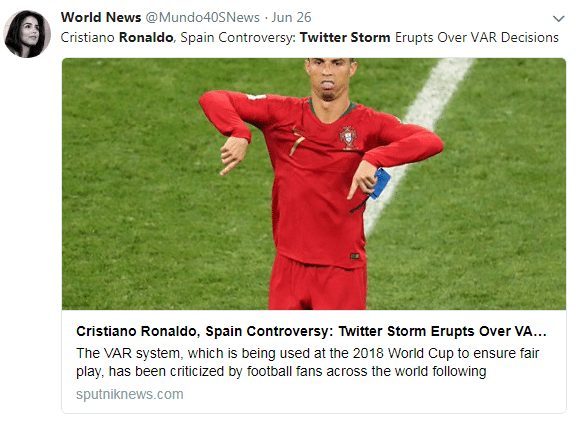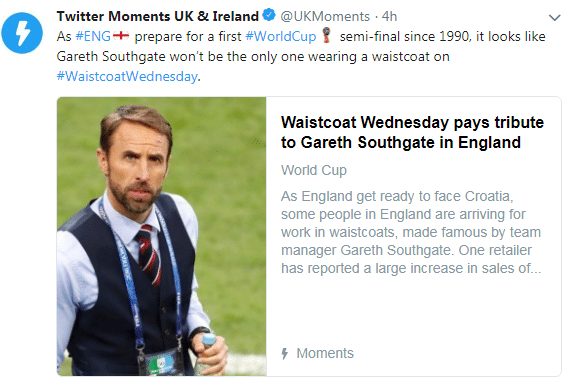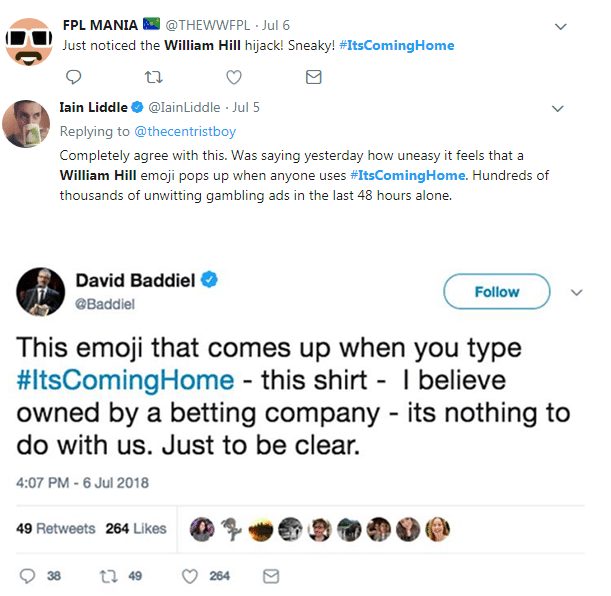If ever a week demonstrated social media at its best (and probably worst – but let’s stay optimistic), then this week is as good a week as any. Since the start of the World Cup, football fever has descended on the UK and our newsfeeds. With it, we have generated a plethora of hashtags, hashflags (more on that later) ‘moments’ and memes.
So in the spirit of things, let’s take a look at the highlights, and delve a little deeper into some of the success stories.
It’s worth pointing out that different social channels can be utilised for different purposes, and Twitter, in particular, is often deemed the go-to for news, commentary, and live events.
So, for the purpose of this blog post, Twitter seems the obvious channel to use to hand pick some of the stand-out content, get to grips with the format it can take, and consider if, how and why it works; can it be measured and impactful?
Translating Twitter
Tweets:
A tweet is simply a post on this particular social network – formally limited to 140 characters, recently increased to 240 characters (in late 2017). Many users are missing the word count restriction – many prolific users gaining admiration and followings for their ability to deliver profound content in concise sentences.

Twitter itself has launched its own version of The Golden Boot award (a football accolade for the most goals scored during a tournament or season) – The Golden Tweet awards. Until the 15th of July, they will analyse data to conclude the biggest, best tweets over the duration of the campaign.
The prize? A trophy featuring Twitter’s iconic blue bird… turned GOLD.
Twitter Storm / Tweet Storm:
A twitterstorm is a spike of activity on the network around one subject or topic. They are generated in several ways, including the instance of many different users using a common keyword or hashtag (perhaps influenced by breaking news) or by one or several key tweets gaining a significant amount of retweets.

Twitter has evolved, and its users are savvy, evolving with it. Be aware of the TwitterStorm in a teacup. Yes, it’s a thing. Some definitions of a TwitterStorm /Tweet Storm include the recognition that a statement or exchange on Twitter makes it into the traditional press. Often, due to the nature of British media outlets, TwitterStorms are regularly associated with being negative, controversial or simply sensationalised.
Moments:
Moments are a collection of tweets (perhaps superseding the TwitterStorm). By making several tweets into a moment, Twitter (in fact, any user as of late 2017) can curate and connect any user-content to create a story, or give a narrative on a specific topic. This is great for users – moments can be easily located, in their own tab; are a great way to include context or perspective, and a great tool for utilising user-generated content. Official Twitter Moments take pride of place in news feeds.

Hashtags:
Any word, acronym or phrase (without spaces or punctuation) preceded by #.
Have you spotted today’s in the moment image above?
#hashtags are searchable on Twitter, effectively creating links to content using them. They are used by data teams to identify keywords and trending terms, and to measure engagement and popularity within apps – especially Twitter (sometimes generating new slang as a by-product!)
The hashtag winners of this #WorldCup campaign are well known.
My personal favourite is #GarethSouthgateWould. Having surely spent over a decade haunted by a certain England experience in 1996 that we won’t speak of, Gareth Southgate is now on his way to becoming a national treasure at the age of 47, partially thanks to social media.
This particular fan-generated hashtag emerged almost immediately after the #ENGCOL penalties victory. As Southgate’s initial reaction was *not* to celebrate with his team, but comfort a Columbian loser, the nation took it upon themselves to celebrate Southgate instead, with some never mind viral, but simply heart-warming, hilarious and creative # usage;

In the days when the news is often shocking, tragic or outright depressing, it’s a real testament that social media can, in fact, spread some joy.
Hashflags
Even if you don’t use social media, you may well have been exposed to the other hashtag favourite: #itscominghome.
But this one is more complicated. It comes with a hashflag. That’s not a typo. A hashflag is the customised emoji that automatically appears at the same time. And it’s not been without its cynicism…
At some point during the course of the tournament, William Hill sponsored this hashtag (William Hill have issued a statement to clarify it was at the start of the tournament). What does that mean? Tweets using this hashtag automatically (and often unbeknown to users) shared the hashflag too, which was a football shirt with the William Hill logo on.

There was a backlash. Whilst #itscominghome has been tweeted 1.4 million times, many thousands of those tweets have been critical of William Hill for ‘high jacking’ the celebrations, or worse, promoting gambling irresponsibly.

I speak in past tense; after a short period of silence on the matter, Twitter has now dissociated the emoji.
Prior to the disconnect, it appears fans had deliberately starting spelling the hashtag ‘wrong’ demonstrating the social power of the knowledgeable ‘Twiterati’.

Memes
The word ‘meme’ was first used by behaviourists as a way of describing social memories and cultural ideas, and in social media terms, it refers to any image, quote, video (commonly gifs – a small animated clip) with viral qualities. Often using humour, these golden nuggets of social media often become famous in their own right and are shared, re-invented, re-enacted, generating further engagement and discussion. Following England defender Harry Maguire’s remarkable header into the back of the net, a meme quickly surfaced due to his cool, casual interaction with his girlfriend, much like the world’s most current caption competition.
Maguire joined in the fun, ‘meme-ing’ himself, endorsing the message, and amplifying the clout no-end.

So there’s my roundup. And for me, two key takeaways.
1. Dive into user generated content
The first thing to note; the majority of likeable, shared content on social media right now is ‘user’ generated. The tone of voice? It’s dictated by ‘the people’.
#garethsouthgatewould not run through a field of wheat’ is an example of a political take (a play on a now infamous Theresa May quote) whereas ‘#garethsouthgatewould stay loyal in Casa Amore’ (a Love Island, reference) is a much lighter-hearted quip around popular and/or social culture.
So the question is; can brands really lead when it comes to social conversation? Or do we need to start listening? To effectively and authentically engage on social media, you need a conversation strategy – think about which camp your audience is in and pitch your input appropriately. Let your customer lead, and be human in your response.
2. Avoid own-goals: think about engagement goals instead
The second point, and my conclusion? This flurry of social activity we are seeing is:
One. Big. Conversation.
Rightly so. Social media channels should be a two-way-street: if there was no room for discussion then we wouldn’t be seeing the engagement we are. Social media messaging has to be authentic, current, humorous, etc. to resonate. And it has to resonate to connect with people; to gain genuine traction; to incite action.
Otherwise, we wouldn’t be liking, sharing, and most importantly; wearing our #WednesdayWaistcoats right now.
Does your marketing team perform when it counts?
To tackle social media in a way that meets your businesses goals, do you have the right team in place? If you want help shaping your social media game plan and seeing results, talk to jess@idealmarketingcompany.com about social media strategy and metrics today.







